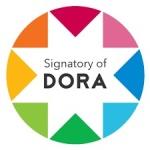Déterminants du choix des produits bancaires islamiques en Algérie : une étude empirique
Résumé
Le choix des produits bancaires islamiques se fait suivant plusieurs facteurs religieux, culturels ou économiques. Ces produits étant encore en évolution en Algérie les déterminants du choix de ces produits restent peu connus.
Ainsi, cet article vise à étudier les facteurs qui déterminent le choix des produits bancaires islamiques au détriment des produits conventionnels pour les consommateurs algériens. Pour cela une étude empirique par régression est réalisée en analysant l’impact des facteurs sur la préférence pour ces produits. L’étude est réalisée sur les réponses d’un questionnaire adressé à 77 usagers de produits bancaires islamiques.
Les résultats démontrent que la préférence pour les produits bancaires islamiques pour le consommateur algérien est largement basée sur le facteur religieux et dans une moindre mesure par le facteur social. Cependant, le reste des facteurs n’influencent pas ce choix ce qui est atypique à l’Algérie mais correspond aux caractéristiques réelles des produits proposés.
##plugins.generic.usageStats.downloads##
Références
Ahmad, N., & Haron, S. (2002). Perceptions of Malaysian corporate customers towards Islamic banking products and services. International Journal of Islamic Financial Services, 3(4), 13-29.
Al-Ajmi, J., Abo Hussain, H., & Al-Saleh, N. (2009). Clients of conventional and Islamic banks in Bahrain: How they choose which bank to patronize. International Journal of Social Economics, 36(11), 1086-1112.
Al-Hawari, M., & Ward, T. (2006). The effect of automated service quality on Australian banks’ financial performance and the mediating role of customer satisfaction. Marketing Intelligence & Planning, 24(2), 127-147.
Arora, R., Cavusgil, S. R., & Nevin, J. R. (1985). Evaluation of financial institutions by bank versus saving and loan customers: an analysis of factor congruency. International Journal of Bank Marketing, 3(3), 47-55.
Avkiran, N. K. (1999). Quality customer service demands human contact. International Journal of Bank Marketing, 17(2), 61-74.
Awan, H. M., & Khuram, S. S. (2011). Customer's criteria for selecting an Islamic bank: Evidence from Pakistan. Journal of Islamic Marketing, 2(1), 14-27.
Bachir, M. F. (2013). The Determinants of Selecting Islamic Banks From the Point of View of Their Individual Customers at the State of Kuwait: An Empirical Study. Middle East University. Kuwait: Mémoire de Magistère.
Chahrazed, I. (2020, Mars 27). Finance Islamique en Algérie: La banque d'Algérie fixe les conditions. Consulté le Juin 25, 2020, sur Dzair Daily: https://www.dzairdaily.com
De Mooji, M. (2019). Consumer behavior and culture: consequences for global marketing and advertising (éd. 3ème). Thousand Oaks, Californie: SAGE.
Dusuki, A. W., & Abdullah, N. I. (2007). Why do Malaysian customers patronise islamic banks? International Journal of Bank Marketing, 25(3), 142-160.
Gerrard, P., & Cunningham, B. (1997). Islamic banking: a study in Singapore. International Journal of Bank Marketing, 15(6), 204-216.
Gerrard, P., & Cunningham, J. B. (2001). Singapore’s undergraduates: how they choose which bank to patronise. International Journal of Bank Marketing, 19(3), 104-114.
Haron, S., Ahmad, N., & Planisek, S. I. (1994). Bank patronage factors of Muslim and non-Muslim customers. International Journal of Bank Marketing, 12(1), 32-40.
Kaabachi, S. (2015). Le comportement du consommateur envers les banques islamiques: une méta-analyse des perceptions, des attitudes et des critères de choix des individus. Les cahiers de la finance islamique(8), 7-40.
Kaufman, G. G. (1967). A Survey of Business Firms and Households View of a Commercial Bank. Report to the Federal Reserve Bank of Chicago. Appleton (Etats-Unis): University of Wisconsin.
Kaynak, E., & Harcar, T. D. (2005). American consumers’ attitudes towards commercial banks:a comparison of local and national bank customers by use of geodemographic. International Journal of Bank Marketing, 23(1), 73-89.
Martenson, R. (1985). Consumer Choice Criteria in Retail Bank Selection. International Journal of Bank Marketing, 3(2), 64-75.
Mason, J. B., & Mayer, M. L. (1974). Differences between high-and-low-income savings and checking account customers. The Magazine of Bank Administration, 65, 48-52.
Metawa, S. A., & Almossawi, M. (1998). Banking behaviour of Islamic bank customers: perspectives and implications. International Journal of Bank Marketing, 16(7), 299-313.
Nacer, K., Jamal, A., & Al-Khatib, K. (1999). Islamic Banking : A Study of Customer Satisfaction and Preference in Jordan. International Journal of Bank Marketing, 17(3), 135-150.
Omer, H. (1992). The implication of Islamic beliefs and practice on Islamic financial institutions in the UK: Profit-Sharing and Risk. Loughborough University. Loughborough (Royaume Unis): Thèse de Doctorat.
Sami, A. (2017). Les banques islamiques en Algérie. Ecole Nationale Supérieure de Statistiques et d'Economie Appliquée. Alger: Thèse de Doctorat.
Siguaw, J. A., & Simpson, P. M. (1997). Effects of Religiousness on Sunday Shopping and Outshopping Behaviors: A Study of Shopper Attitudes and Behaviors in the American South. The International Review of Retail, 7(1), 23-39.
Zaher, T. S., & Hassan, M. K. (2001). A comparative literature survey of Islamic finance and banking. Financial Markets, Institutions & Instruments, 10, 155-199.
Copyright (c) 2021 Amani Ismail

Ce travail est disponible sous licence Creative Commons Attribution - Pas d’Utilisation Commerciale 4.0 International.















